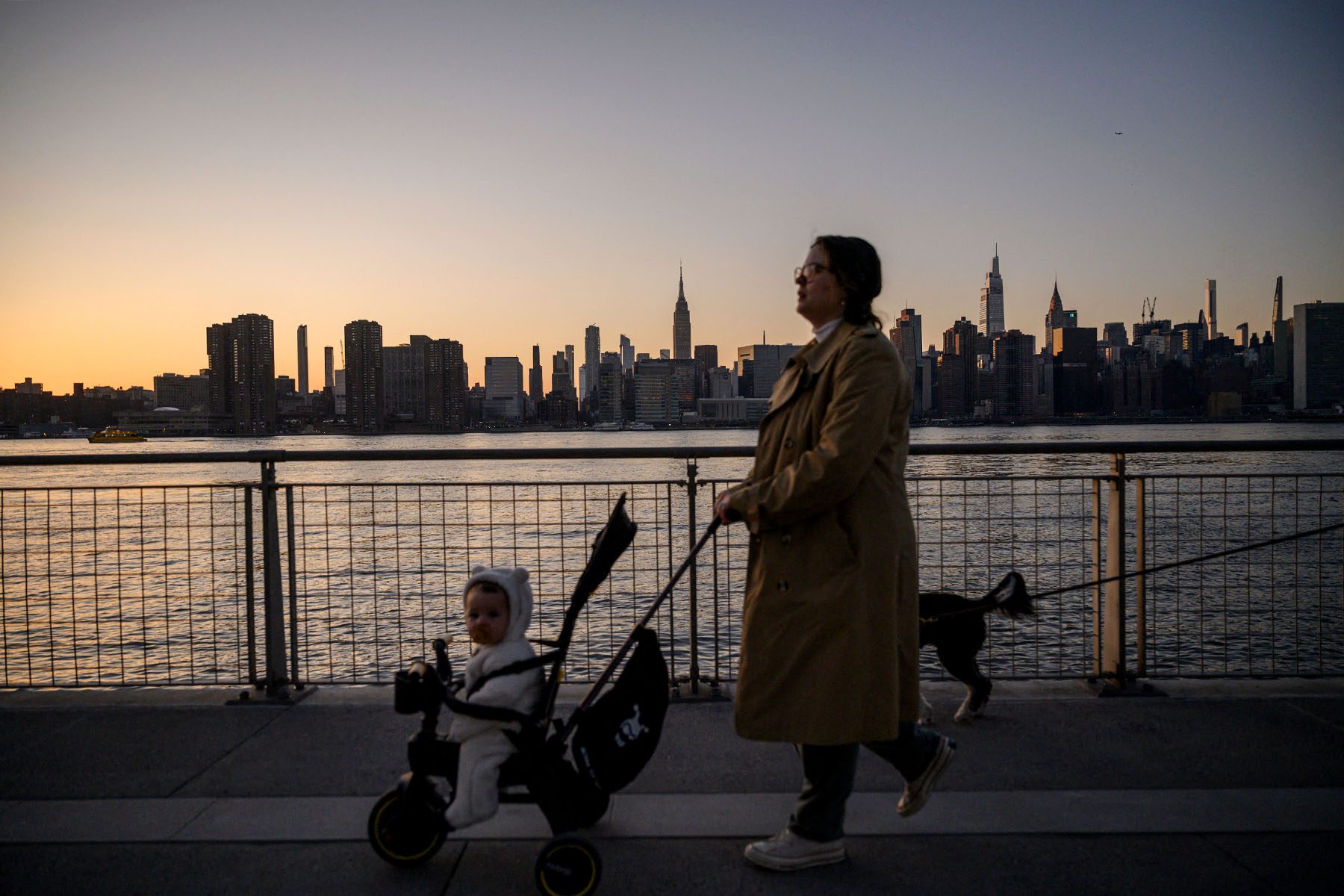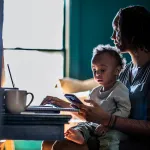We’re telling the untold stories of women, women of color and LGBTQ+ people. Sign up for our daily newsletter.
In the past 50 years, the share of women who earn as much or more than their husbands has tripled. But here’s what hasn’t changed: Even as wives in heterosexual relationships have started outearning their spouses, they are still doing more of the care and the housework while their husbands have more leisure time, according to a new study by Pew Research Center released Thursday.
The findings piece together data from the past five years on how people use their time, looking at different income structures of heterosexual married couples — couples in which the wife is the sole breadwinner, the wife earns more than the husband, both partners earn about the same, or in which the husband is the primary or sole breadwinner.
In all five types except for one — in which the wife is the sole earner — wives are doing hours more caregiving work every week than their husbands. And in every scenario they do more or equal housework compared with their husbands.
“[Women] are taking on a greater economic role, but in terms of what’s happening in the home that is not equally parsed out,” said Richard Fry, a senior researcher at Pew and the lead author of the study.
When husbands and wives earn about the same, husbands are spending three to four hours more a week working and in leisure activities, while wives are spending two hours more on caregiving and nearly three more hours doing housework. Even when the wife is the primary breadwinner, she is spending about one-and-a-half hours more on care and two more hours on housework, while husbands get nearly nine hours more of leisure.
That phenomenon is what Eve Rodsky calls the assumption tax in her book “Fair Play.” People assume that as women become a higher share of college graduates and breadwinners, they will take on fewer responsibilities at home because they are no longer working or earning less.
Rodsky came up against that when she was trying to get “Fair Play” — which covers the uneven division of paid labor at home — published in 2016. Would her book still be relevant as women become a bigger part of the economy? As her research and now Pew’s has found, that gendered division of labor persists.
“The assumption is not based on money,” Rodsky said. “The assumption is based on gender.”
That was true through the pandemic and particularly May through December 2020, when more couples were both working at home and most schools and day cares were closed. An analysis by the Brookings Institution of that time frame found that moms of kids under the age of 12 were spending about eight hours a day — the equivalent of a second job — on child care while also devoting an average of six hours on weekdays to their job. Dads were spending about five hours on care daily while working eight-hour days on average.
Lauren Bauer, the researcher who conducted that study, said there is increasing evidence that care work is starting to be split more equitably, particularly among husbands and wives with higher education.
Women with more formal education are more likely to out-earn their husbands, or be co-breadwinners, Pew found. And Bauer found that higher-educated men are more likely to do more care work. In those marriages, the split of care is more even between partners, but women are still often taking up more housework.
“The financial needs of a household require that women are more of a financial contributor, and the values that are changing over time suggest that more people are choosing to spend time with their kids,” Bauer said. ”That doesn’t mean that someone doesn’t have to cook and do the dishes and clean the bathroom. There is less time left over and that’s when the ‘traditional way’ of dividing things continues to disproportionately fall on women.”
All of the chores and care work women do helps enable men to work more hours, said SJ Glynn, the senior adviser for the U.S. Department of Labor’s Women’s Bureau.
“If we want to make an argument that more hours lead to higher pay … the fact that these men and these fathers are able to work those longer hours in many cases is dependent on having a partner who is doing that work for them, because someone has to be doing it,” said Glynn, who has studied women breadwinners specifically. “All of this is really bound up with each other.”
Pew’s data looked specifically at time wives and husbands spent on direct activities — such as feeding, bathing or playing with kids — but not at indirect time, like when someone is multitasking by grocery shopping with their kids in tow, for example. That may miss some of the nuances of the additional work women are taking on, Glynn said, because moms are especially likely to care for their kids while doing something else at the same time.
That’s a layer that little research has gotten into. Rodsky has spent years studying what work each person in a couple is actually doing when they were saying they both shopped groceries, for instance. She came up with a simple question: How did that mustard get into your refrigerator?
That’s when a woman would say she was the one who monitored what mustard her family liked, when it was low and when it needed to be added to the grocery list, and her husband was the one who would pick it up.
“Women are still holding the conception and planning and men are holding execution tasks. My feeling is until we really unpack and ask the questions about who is holding the conception and planning — the work behind the work” then the statistics will miss how much more work women are truly taking on, Rodsky said.
Underpinning all of this is the reality that gendered expectations are a very powerful reason why women do more domestic tasks — and why the gender pay gap doesn’t budge even when women surpass men in educational attainment.
Pew conducted a nationally representative survey of about 5,100 Americans in January and found that only 7 percent said society values men’s contributions at home more than at work. About 31 percent said society values women’s at-home contributions more than their contributions in the workplace.
And yet, the share of wives in heterosexual couples who are the sole or primary breadwinner has increased from 5 percent in 1972 to 16 percent today. The share of couples where both earn about the same grew from 11 percent in 1972 to 29 percent in 2022. Throughout those 50 years, Black wives have been the most likely racial or ethnic group to be a breadwinner in their marriage. In 2022, 1 in 4 Black wives out-earned their husbands. The opposite has been true for Latina wives, who are the most likely group to have a husband who is the breadwinner.
Meanwhile, since 1972, the share of husbands who were sole or primary providers declined from 85 percent to 55 percent in 2022.
In Rodsky’s view, the reason that gender roles have been so entrenched is because Americans have been taught that women’s time is infinite — think of the moms who can always “find time” — and men’s time needs to be protected. To test that, Rodsky called 50 schools across the country and asked them why they called the woman first when a child was sick.
The answer wasn’t that she was first on the list. It was that men didn’t pick up, or they didn’t want to bother them while they were working.
“It’s this ingrained nature that we should protect men’s leisure time or time to work for money,” Rodsky said. “What happens when you create a gender binary where one half of the population’s time is diamonds and one half is sand? Of course you’re going to use the sand.”






